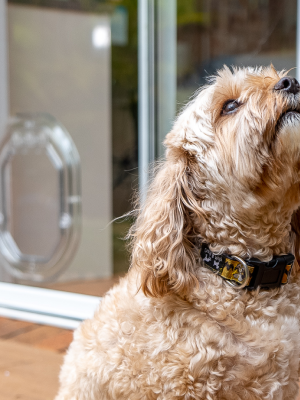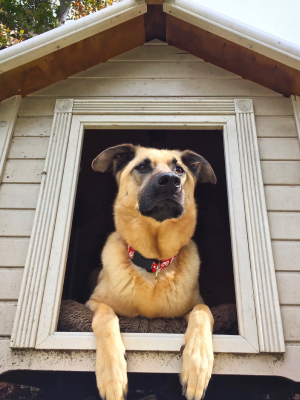
You’ve heard of puppy dog eyes, but what about a ‘good boy grin’? Yes, dogs can smile, but what lies behind those heartwarming expressions?
Our Blog
Our Blog
6/12/23
Do Dogs Smile?
You’ve heard of puppy dog eyes, but what about a ‘good boy grin’? Yes, dogs can smile, but what lies behind those heartwarming expressions? From the playful antics of a Golden Retriever to the unwavering devotion of a German Shepherd, it turns out smiling is an evolutionary trait that has passed down from the long bond between dogs and humans, and the reasons (and benefits) may surprise you.
In this article, we’ll look at what a happy hound looks like, unravel the mystery behind those heart-melting doggy smiles, what they reveal about our four-legged friends’ emotions and why dog smiles are good for our health.
Can Dogs Actually Smile?

Any dog can smile, and according to veterinary behaviour specialists, some breeds, like terriers and cattle dogs, are genetically predisposed to smile more than others. But do dogs actually express happiness through smiles, or does their face just look like that sometimes?
While some experts agree dogs smile in response to the human smile, we can tend to anthropomorphise and misinterpret what we see on a dog’s face because of our affection towards our four-legged friends. What is agreed upon is dogs are very adept at understanding human emotions and will often mirror our expressions to appease us. Findings published in Scientific Reports show that this particular expression, called ‘relaxed open mouth’ in dogs, typically occurs in positive settings, and they may even wag their tail to complete the gesture.
Dogs express smiles not only when relaxed but also as a ‘submissive grin’ to convey deference, mirroring behaviour from their wolf ancestors. This submissive gesture, akin to lowered tails or exposing their bellies, signifies a lack of threat, reflecting a pack hierarchy. Going back 30 million years, biologists have suggested the human smile originated as a ‘fear grin’ in our primate ancestors. It was a non-threatening signal used in tense situations, often directed at superior individuals. This behaviour may have been preserved in dogs, serving a similar purpose in communication with humans.
Animal behaviourists also embrace the idea that a dog’s smile is not just a quirk of nature but a versatile and advantageous social tool. It traces back to the early domestication of wolves, where scientists believe animals that displayed facial expressions that enhanced their neonatal characteristics – i.e. looked super cute – were preferentially treated by humans. The same behaviour continues today where dogs quickly learn there will be a positive when they smile, so they will continue smiling to receive positive reinforcement – i.e. treats and good boy pats.
Do Dogs Smile at Other Dogs?
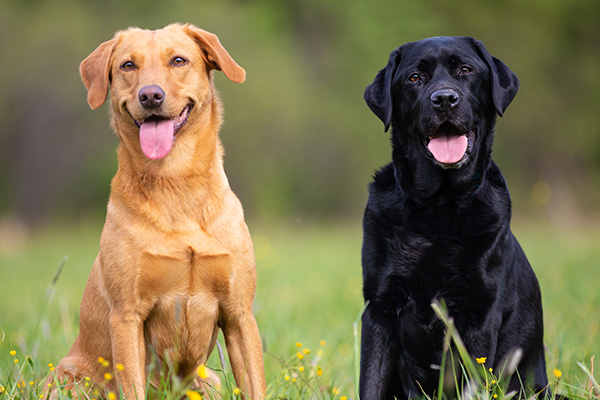
When it comes to communicating, dogs don’t smile at each other as they might at humans. They would much rather sniff each other’s behinds as a greeting than flash each other a toothy smile. Smiling is another special bond reserved for humans, and it’s worth noting that dogs stand out as the only animals capable of comprehending and responding to human gestures. Even our closest relatives, chimpanzees, can’t do this. This unique ability can be attributed to the appeasement greeting behaviour that appears to be primarily directed at people. It wasn’t until dogs began interacting with humans and adapted to our social cues and norms that they learned to smile.
To get their message across, dogs put their senses to work using smell, sight and sound to communicate. While humans are primarily auditory creatures, dogs are predominantly visual observers, attuned to the nuances of body postures and the intricacies of scents in their communication.
Do Dogs Smile With Their Teeth?
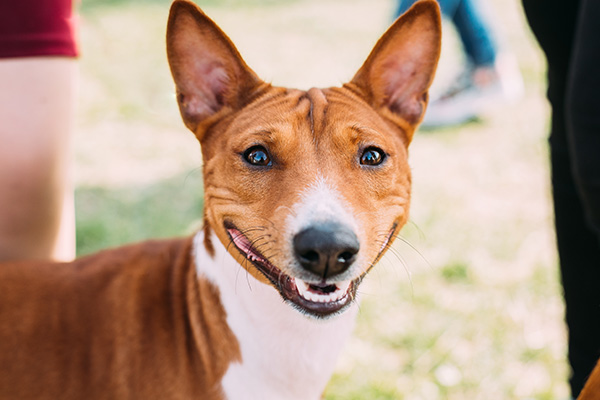
A genuine dog smile may involve the display of teeth but will often be accompanied by submissive actions like tail wagging. However, it’s crucial to be aware that aggressive behaviour can be misinterpreted as a smile, as dogs may also bare their teeth as a warning signal that they are on edge.
As dogs don’t smile like humans do, the trick to determining whether your dog is smiling is to pay attention to their body language. This way, you won’t confuse a smile with something more sinister. Because both a submissive and aggressive grin involves teeth-baring, it’s crucial to know the difference between them. There are a few ways you can tell:
A Submissive Grin:
- Licking lips
- Loosey-goosey and wiggly
- They may relax after getting attention
An Aggressive Grin
- Possibly snarling or growling
- Stiff body
- Moving slowly and looking tense
Pay close attention to their tail if you’re still finding it challenging to discern your dog’s emotions. A joyful and playful dog will exhibit a tail wagging in a broad, sweeping, or circular motion, whereas an uneasy dog may hold their tail stiff and upright. It’s important to note that the expression of happiness in dogs can occasionally be mistaken for panting, which, although different, can also signify relaxation in your furry companion.
Do Dogs Have Emotions?
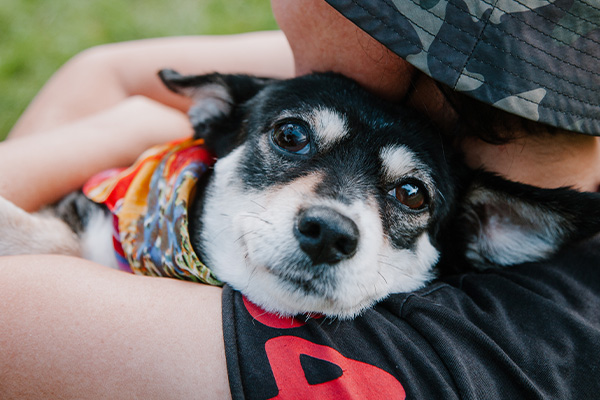
Apart from being utterly adorable, toddlers and dogs share another thing in common. Studies have shown that dogs display a level of emotional intelligence comparable to a two to three-year-old child. During brain scans, the areas of the brain that light up when people show emotion also show increased activity in dogs experiencing similar emotions.
Much like humans, dogs blend auditory cues with visual information from facial expressions, experiencing similar positive emotions and pleasure. But dogs also experience their feelings in response to certain situations. Researchers believe that dogs may feel emotions including love, joy, grief, jealousy and disgust, to name a few.
If smiles are about expressing emotion, and dogs are proven to have emotions, then it’s very reasonable to expect them to smile. Also, have you ever encountered a scent that instantly transported you to a specific place or memory? Given that a dog’s primary sense is smell, and a significant portion of their brain is devoted to processing scents, this further reinforces the idea that dogs might be even more profoundly influenced by their emotions than humans.
How To Tell If Your Dog is Happy if They Aren’t Smiling?
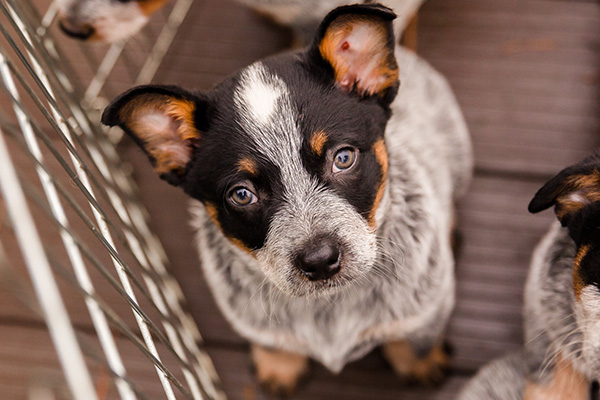
You’re not mistaken: Your dog genuinely enjoys gazing into your eyes while you share a smile, and this affection is undoubtedly mutual. What’s impressive is that it’s backed by science. Studies reveal that when dogs and humans lock eyes, both experience a surge in oxytocin levels, a hormone known for fostering social bonds. This heart-warming connection between you and your furry friend is more than just a feeling; it’s a scientifically confirmed bond.
Oxytocin can make us healthier physically, emotionally, and socially by lowering blood pressure, and there’s evidence that smiling and being smiled at can also boost the immune system. Even more intriguing, dogs sniffing oxytocin would spend more time staring at humans.
Another way to tell if your dog is happy or not is to pay attention to their body language:
- A high, wagging tail is a well-known sign of a happy dog.
- Relaxed ears indicate contentment.
- A relaxed body posture suggests your dog is feeling at ease.
- Playful behaviour, such as ‘play bows’, shows a good mood.
Bringing a smile to your dog’s face is as straightforward as ensuring their happiness. Engage in play, offer praise, share affectionate moments, and watch those joyful interactions lead to heartwarming canine grins.
Though it takes considerable dedication to nurture a happy dog, the fundamental principles are relatively simple. Prioritising socialisation, maintaining consistent training, adhering to a routine and providing ample exercise all contribute to guaranteeing your dog’s overall happiness and well-being.
Now you should know more about why dogs smile and the fascinating history of where and how it all started. We also learnt how to tell a happy dog from a nervous dog and the deeply feeling emotions they display. Most importantly, the more you exchange smiles, the better it is for both you and your furry companion’s well-being.
Latest Posts
Latest Posts
Questions? We’re here to help.

